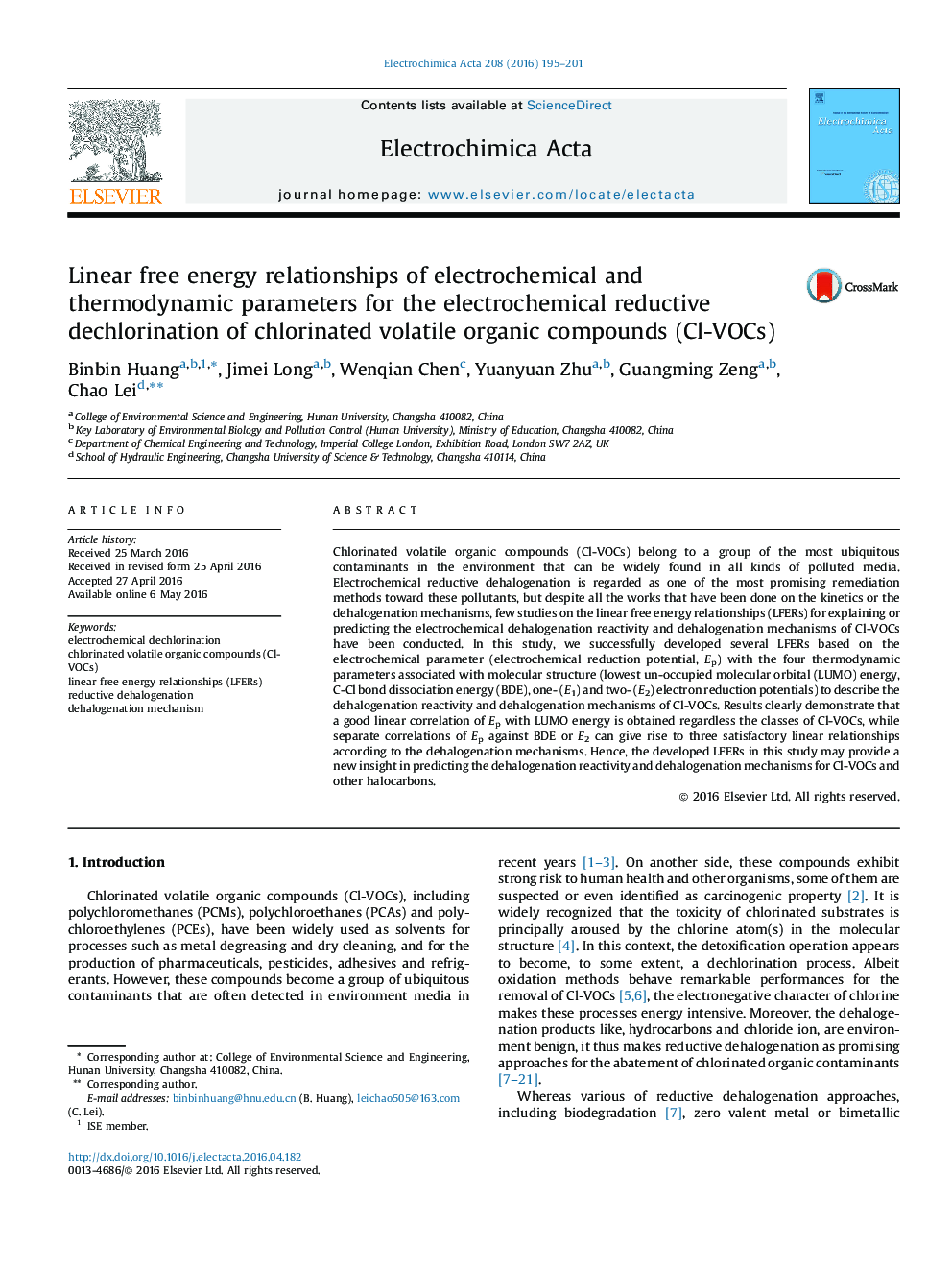| کد مقاله | کد نشریه | سال انتشار | مقاله انگلیسی | نسخه تمام متن |
|---|---|---|---|---|
| 182934 | 459528 | 2016 | 7 صفحه PDF | دانلود رایگان |

• Electrochemical reduction is regarded as a promising remediation method for Cl-VOCs.
• Molecular structure has effect on dehalogenation reactivity and mechanism of Cl-VOCs.
• The dechlorination reactivity and thermodynamic parameters are well correlated.
• The linear free energy relationships (LFERs) are successfully developed.
• This work gives a new insight in predicting dehalogenation reactivity and mechanism.
Chlorinated volatile organic compounds (Cl-VOCs) belong to a group of the most ubiquitous contaminants in the environment that can be widely found in all kinds of polluted media. Electrochemical reductive dehalogenation is regarded as one of the most promising remediation methods toward these pollutants, but despite all the works that have been done on the kinetics or the dehalogenation mechanisms, few studies on the linear free energy relationships (LFERs) for explaining or predicting the electrochemical dehalogenation reactivity and dehalogenation mechanisms of Cl-VOCs have been conducted. In this study, we successfully developed several LFERs based on the electrochemical parameter (electrochemical reduction potential, Ep) with the four thermodynamic parameters associated with molecular structure (lowest un-occupied molecular orbital (LUMO) energy, C-Cl bond dissociation energy (BDE), one- (E1) and two- (E2) electron reduction potentials) to describe the dehalogenation reactivity and dehalogenation mechanisms of Cl-VOCs. Results clearly demonstrate that a good linear correlation of Ep with LUMO energy is obtained regardless the classes of Cl-VOCs, while separate correlations of Ep against BDE or E2 can give rise to three satisfactory linear relationships according to the dehalogenation mechanisms. Hence, the developed LFERs in this study may provide a new insight in predicting the dehalogenation reactivity and dehalogenation mechanisms for Cl-VOCs and other halocarbons.
Figure optionsDownload as PowerPoint slide
Journal: Electrochimica Acta - Volume 208, 1 August 2016, Pages 195–201